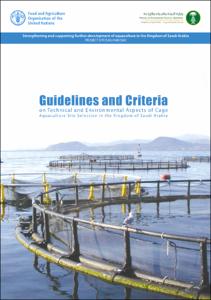| dc.contributor.author | Cardia, Francesco | |
| dc.contributor.author | Ciattaglia, Alessandro | |
| dc.contributor.author | Corner, Richard Anthony | |
| dc.coverage.spatial | Saudia Arabia | en_US |
| dc.date.accessioned | 2021-07-13T19:28:07Z | |
| dc.date.available | 2021-07-13T19:28:07Z | |
| dc.date.issued | 2017 | |
| dc.identifier.citation | Cardia, F., Ciattaglia, A. and Corner, R.A. (2017) Guidelines and criteria on technical and environmental aspects of cage aquaculture site selection in the Kingdom of Saudi Arabia. Rome, Italy, Food and Agriculture Organization of the United Nations and Ministry of Environment, Water and Agriculture in the Kingdom of Saudi Arabia, 55pp. DOI: http://dx.doi.org/10.25607/OBP-1548 | en_US |
| dc.identifier.isbn | 978-92-5-109600-0 | |
| dc.identifier.uri | https://repository.oceanbestpractices.org/handle/11329/1616 | |
| dc.identifier.uri | http://dx.doi.org/10.25607/OBP-1548 | |
| dc.description.abstract | Aquaculture and more specifically marine aquaculture is a growing industry that currently supplies
approximately 50 percent of the world’s global fish market. This will certainly continue with an anticipated
global increase in production of 30 million tonnes required by 2050 to provide fish products to a growing
population globally. FAO indicates that Mariculture, growing fish in the sea, will be the major sub-sector of
this industry to expand in to the future. The marine environment offers an available resource and provides
space for expansion, even recognising competing needs.
The Kingdom of Saudi Arabia has two coastlines, in the west the Red Sea and in the East the Arabian Sea.
The KSA is expected to expand Mariculture primarily in the Red Sea and it is on this premise that these
guidelines and (where relevant and available) criteria have been developed. Much of the detail, however,
is generally applicable and may equally apply to all KSA coasts.
Expansion and long-term sustainability of the aquaculture in the Red Sea will depend on the development
and adoption of best management practices, which includes identification and selection of the right sites
in which to locate fish farms, the subject of this document.
Any aquaculture project has, among its early primary tasks, the selection of the most suitable site for the farming
business. An error in the site selection and evaluation stage can strongly influence the profitability, impact running
costs and production capacity and affect fish mortality, health and welfare, which combined would make any fish
farm unsustainable in the long-term.
The selection of a marine site or zone that would be suitable for deploying the physical infrastructure necessary
to grow fish and then growing the fish in cages requires a number of technical and environmental considerations,
prior to the site being selected and operations begun. This document provides the user with some guidelines
and criteria for consideration in the selection of suitable sites within the Kingdom of Saudi Arabia (KSA). It should
be noted that decisions over siting are often complex and require interpretation. For example a site with good
water flow will remove wastes and replace oxygen in the cages, but the site will remain unsuitable if it is too
shallow. Conversely a deep site is useful, but not if the water flow is very low. Thus when reading this document
consideration must be given to combined factors in determining what a very good site is and what is not, and many
sites will fall between these two extremes.
Attempts have been made to ensure that any guidelines and criteria given comply with the regulations in force
within KSA. The aquaculture regulations issued through the Department of Aquaculture at the Ministry of
Agriculture and other Environmental laws and Regulation issued through and administered by the Presidency
Meteorology and Environment (PME) should take precedence when any errors or inconsistencies are identified.
Please note also that these guidelines and criteria do not specifically refer to the aquaculture application and
licensing process, and the reader should refer to these procedures specifically. In general this is a guide to help
support good site selection, with details on environmental choices that affect the fish being grown and the
infrastructure needed to grow the fish, environmental considerations of long term sustainability and other factors
that will affect the choices made. | en_US |
| dc.language.iso | en | en_US |
| dc.publisher | Food and Agriculture Organization of the United Nations (FAO) | en_US |
| dc.subject.other | Cage aquaculture | en_US |
| dc.subject.other | Site selection | en_US |
| dc.subject.other | Fish farming | en_US |
| dc.subject.other | Coastal management | en_US |
| dc.title | Guidelines and Criteria on Technical and Environmental Aspects of Cage Aquaculture Site Selection in the Kingdom of Saudi Arabia. | en_US |
| dc.type | Report | en_US |
| dc.description.status | Published | en_US |
| dc.format.pages | 55pp. | en_US |
| dc.publisher.place | Rome, Italy | en_US |
| dc.subject.parameterDiscipline | Fisheries and aquaculture | en_US |
| dc.description.currentstatus | Current | en_US |
| dc.description.sdg | 14.2 | en_US |
| dc.description.eov | N/A | en_US |
| dc.description.adoption | National | en_US |
| dc.description.methodologyType | Guidelines & Policies | en_US |
| dc.description.methodologyType | Method | en_US |
| dc.description.methodologyType | Specification of criteria | en_US |
| obps.endorsementAuthorDeclared.recommendedPractice | FAO | |
| obps.contact.contactemail | publications-sales@fao.org | |
| obps.resourceurl.publisher | http://www.fao.org/3/i6719e/i6719e.pdf | |
 Repository of community practices in Ocean Research, Applications and Data/Information Management
Repository of community practices in Ocean Research, Applications and Data/Information Management
